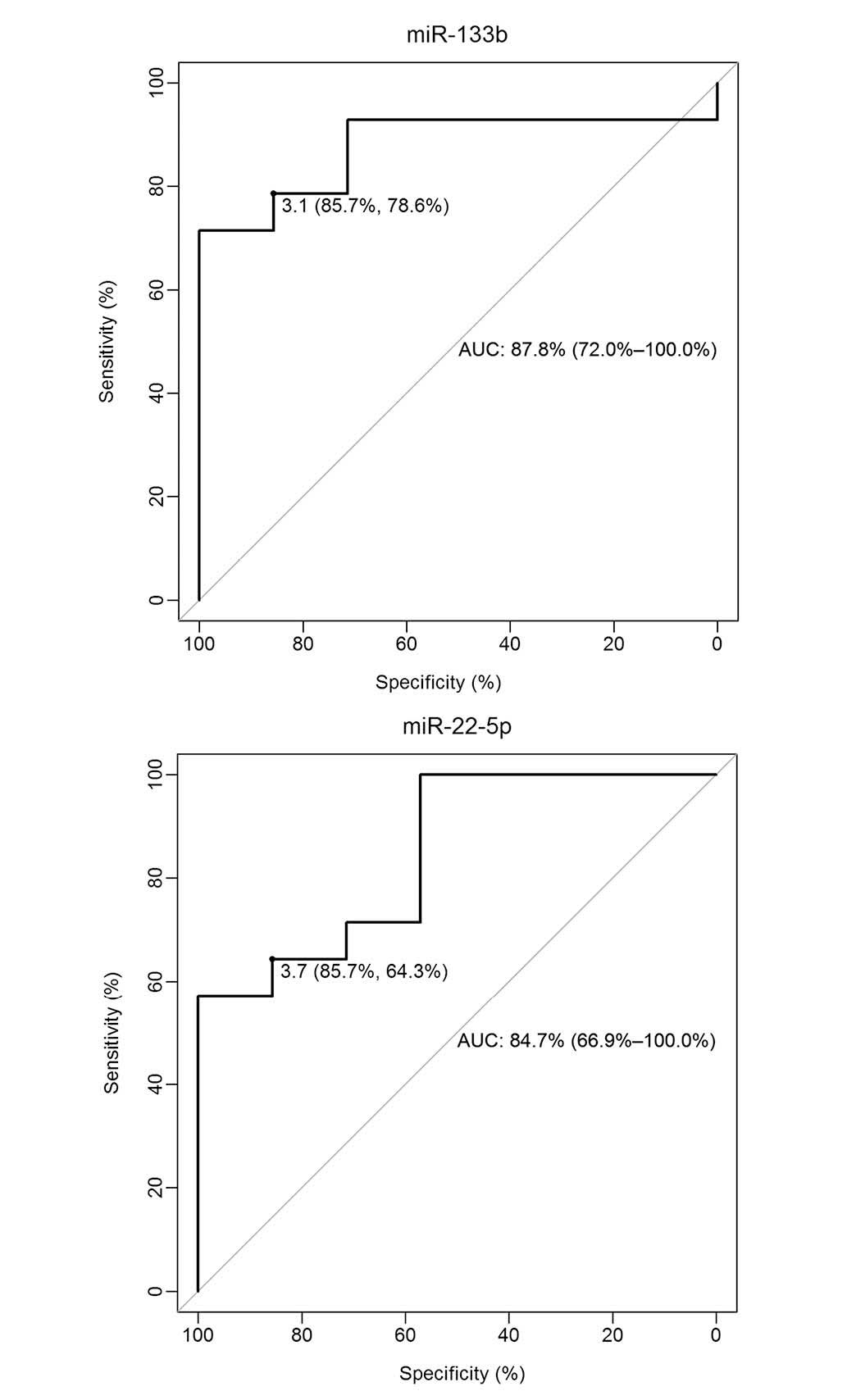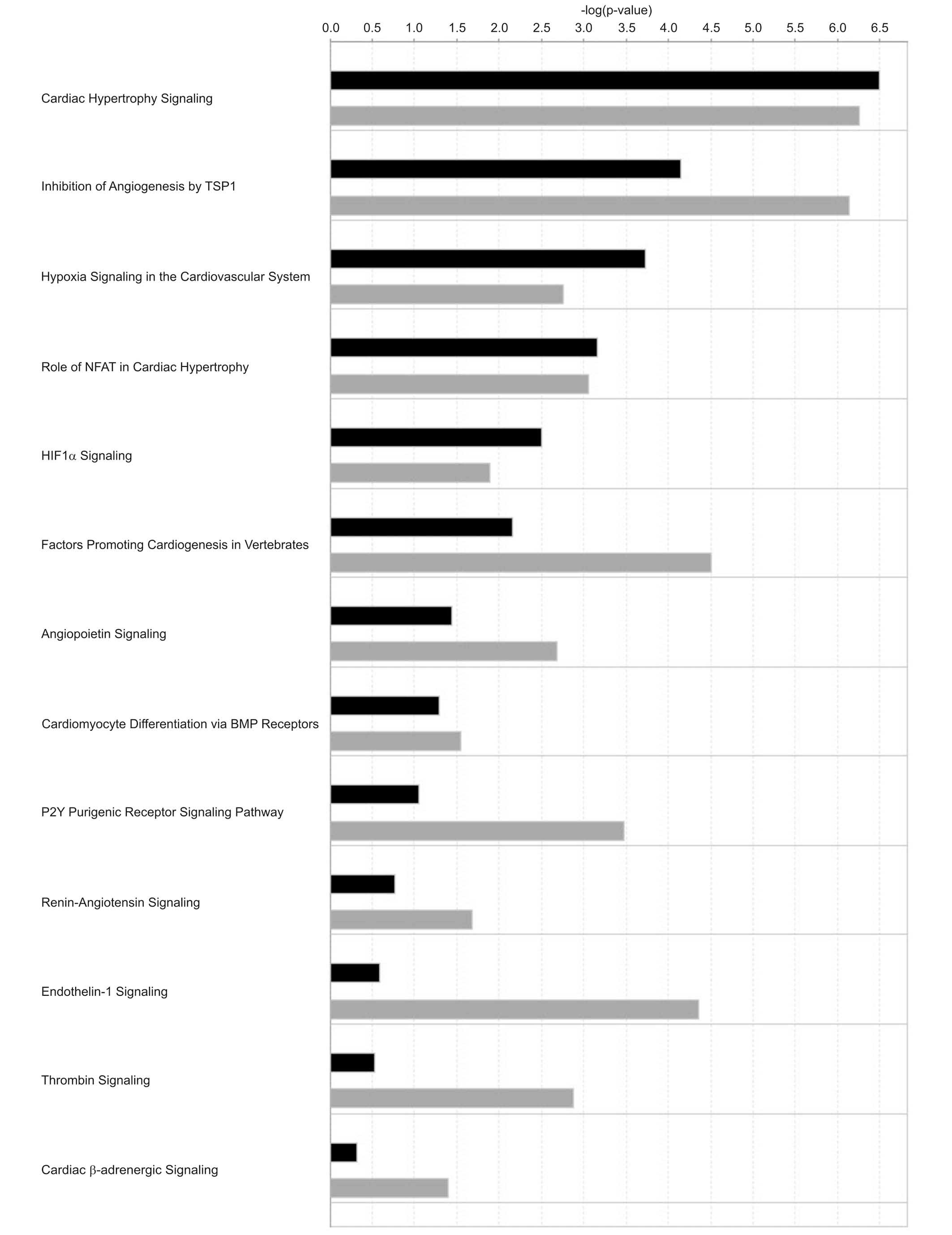miR-22-5p revealed as a potential biomarker involved in the acute phase of myocardial infarction via profiling of circulating microRNAs
- Authors:
- Published online on: July 27, 2016 https://doi.org/10.3892/mmr.2016.5566
- Pages: 2867-2875
Metrics:
Total
Views: 0 (Spandidos Publications: | PMC Statistics:
)
Total PDF Downloads: 0 (Spandidos Publications: | PMC Statistics:
)
Abstract
Acute myocardial infarction (AMI) is a life-threatening episode of coronary artery disease. Recently, circulating myocardial-derived microRNAs (miRNAs) have been reported as potential biomarkers of infarction. The present study aimed to identify differentially expressed miRNAs in patients with ST-segment elevation myocardial infarction that could be potentially dysregulated in response to early myocardial damage. miRNA expression profile analysis was performed using the Serum/Plasma Focus miRNA Polymerase Chain Reaction (PCR) panel of Exiqon A/S (Vedbaek, Denmark) on plasma samples of patients on the first day of AMI (admission) and on samples from the identical patients collected six months following AMI. Selected miRNAs were validated by reverse transcription‑quantitative PCR (RT‑qPCR) using independent patients with AMI and a control group of patients with a stable coronary artery disease. Thirty‑two species of plasma miRNA were differentially expressed (P<0.05) on admission compared with six months following AMI. Subsequent validation in an independent patient group confirmed that miR‑133b and miR‑22‑5p were significantly up‑regulated in the serum of patients with AMI. The receiver operating characteristic (ROC) curve analysis demonstrated a diagnostic utility for miR-22-5p, which has not previously been reported to be associated with AMI. Among the selected miRNAs, miR‑22‑5p represents a novel promising biomarker for the diagnosis of AMI.














